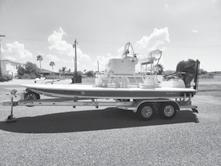




Lone Star outdoor newS
A study that began in 2020 helped biologists learn more about fish behavior, and will help anglers targeting largemouth bass.
Biologists from the Texas Parks and Wild-
life Department completed the study that tracked the movement and behaviors of largemouth bass at Toledo Bend Reservoir and Lake Fork.
In 2018, anglers began reporting a decline in catch rates, and many assumed these de-
clines were attributed to decreased fish populations. Despite reduced catch rates reported in surveys of anglers during 2018-2020, the electrofishing data that biologists gathered on fish populations remained consistent. Biologists wanted to explore if increased

By Nate Skinner
For Lone Star outdoor newS
Recent tropical activity in the Gulf of Mexico has resulted in a washing-machine effect for coastal bays, flushing them with changing tides and salty water. Most an-
glers and fishing guides said this has improved the action for speckled trout and redfish across many bay systems.
Capt. Preston Long has been wade-fishing over deep grass beds with his anglers in waist- to chestdeep water for speckled trout in
the back reaches of Baffin Bay. They have been catching consistent numbers of specks from 2025 inches, with some bigger fish mixed in.
“In a four-day period, my anglers caught seven trout measuring over 26 inches,” Long said.
“The numbers of smaller specks have been impressive, and so have the amount of upper slot and oversized redfish.”
Some of the biggest trout have come right after a school of big reds moved through the flat where they were wading.
Lone Star outdoor newS
Hurricane Beryl made landfall in Matagorda County east of Matagorda Bay as a Category 1 hurricane in the early morning of July 8, with wind gusts topping 89 mph and maximum sustained winds around 80 mph, according to Space City Weather.
Beryl then weakened and tracked northnortheast over land, bringing heavy rains to southeast Texas. Storm surges were 4-6 feet for coastal communities from Matagorda to
Galveston Bay, and significantly less in areas east of Mesquite Bay, including Port O’Connor and Port Lavaca.
Capt. Michael Kubecka, of Reel Rush Char ters, posted videos of the damage and condi tions, using his Starlink satellite system for internet access. The town of Sargent had sig nificant flooding, overturned boats, damaged boat storage facilities, damaged buildings and downed trees.
“It’s almost like those big trout feed on the heels of those schools of redfish, just looking for leftovers as an easy meal,” he explained. “Like clockwork, we seem to always hook up with a large speck right after a school of reds came by.”

“The wind blew 60 to 90 miles per hour all night,” he said. “There were some broken
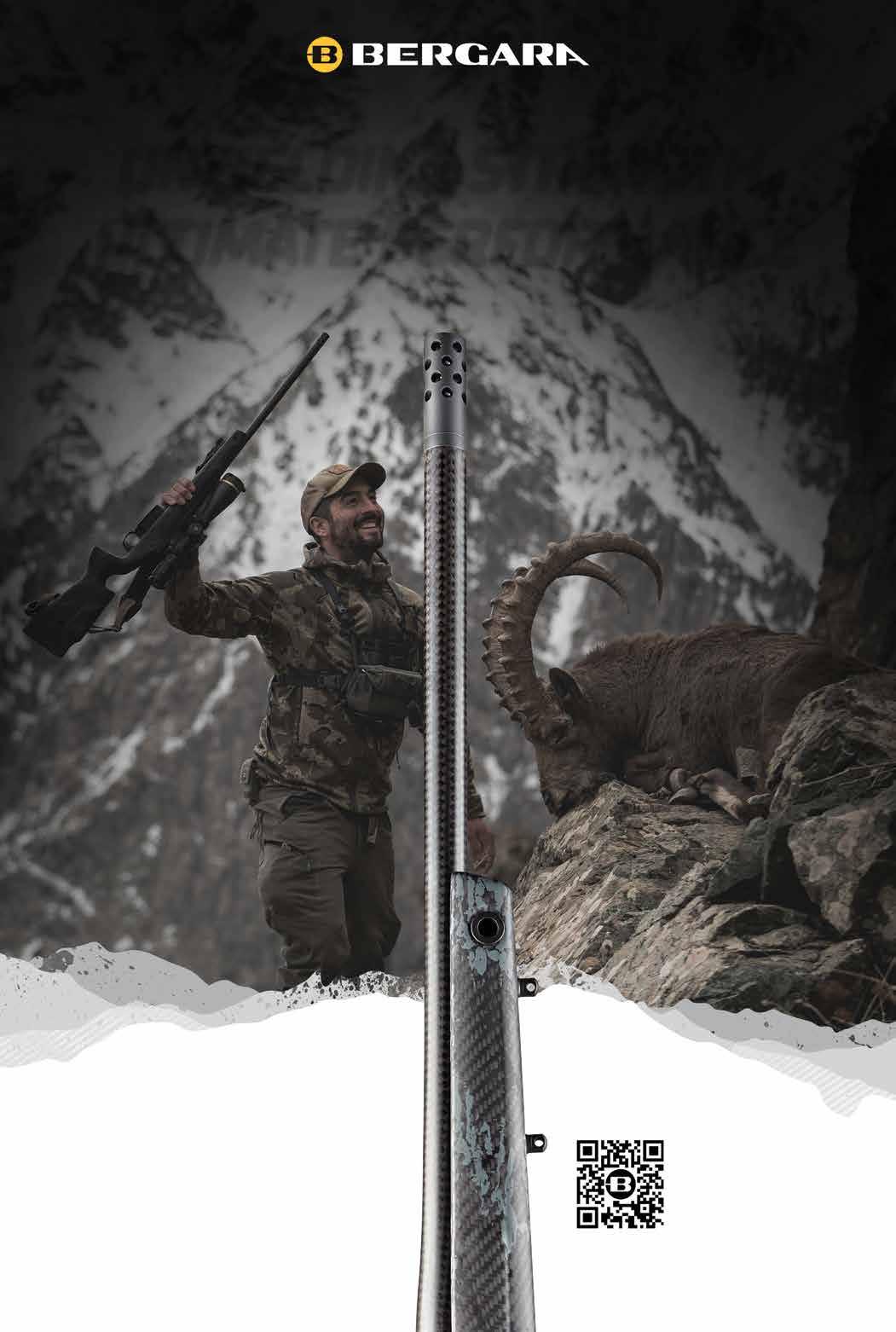


WHATEVER YOUR ADVENTURE IS, WE'VE GOT YOU COVERED.


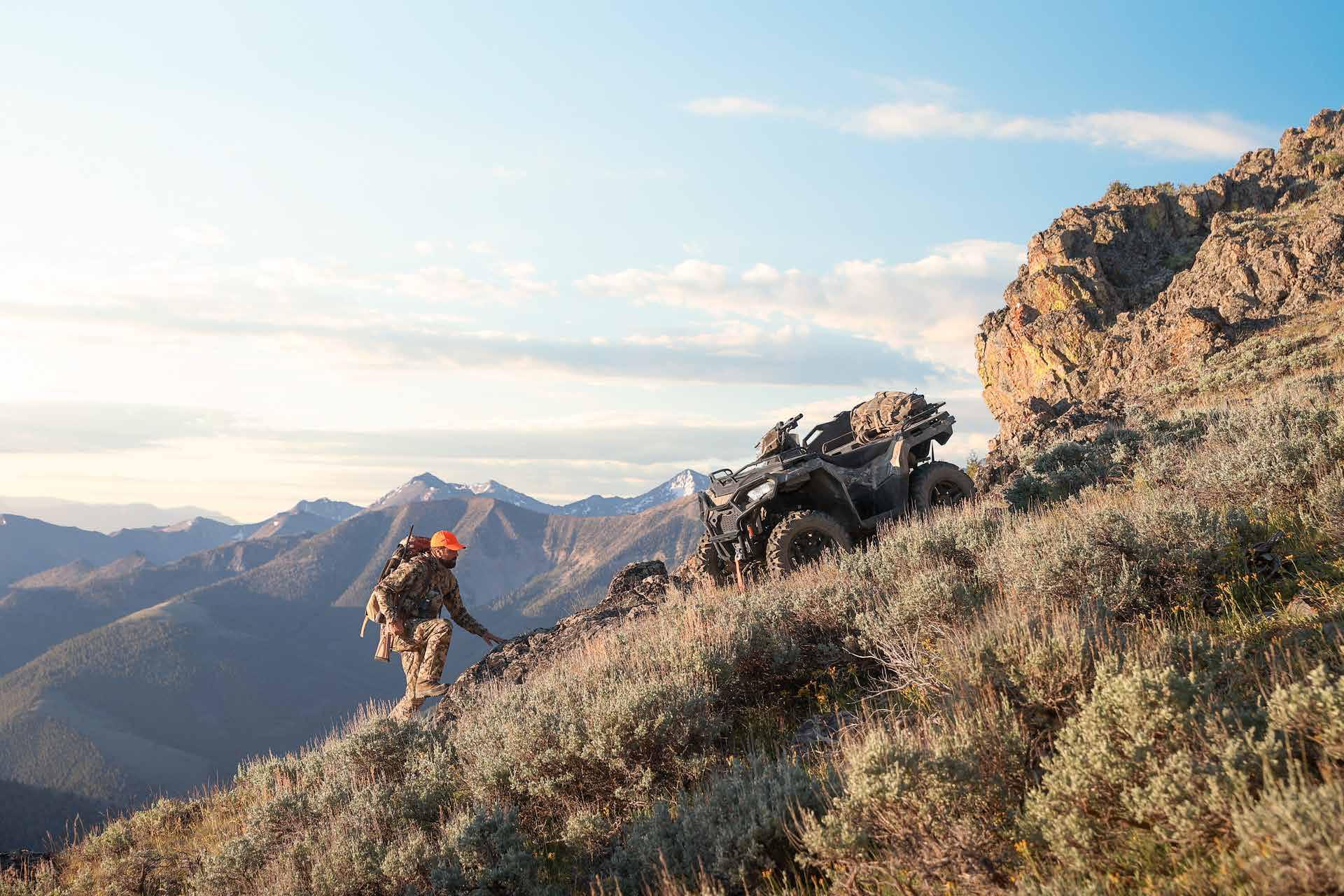



By Mike Bodenchuk For Lone Star outdoor newS
After years of review, study and label revisions by the U.S. Environmental Protection Agency, the feral hog toxi cant Kaput is now available to trained, licensed pesticide applicators in Texas. Texas hunters may remember the controversy that occurred back in 2017 when the EPA first approved the federal label for the toxicant. Kaput feral hog toxicant is a warfarin-based product with 0.05-percent active ingredient. The concentration is only 10 percent of the over-the-counter rodenticide by the same trade name. Because of concerns raised by hunters and environmental groups, the Texas Legislature directed a 2-year study of the toxicant by Texas A&M AgriLife Extension Service and the Texas Wildlife Services Program.

By Helena Hernandez For Lone Star outdoor newS
On Sat. June 29, Safari Club International marked the grand opening ceremony of their new business and member services office in San Antonio.
The field trials conducted across the state showed the toxicant was safe, with no nontarget issue encountered in any of the projects. The product label requires feeding the bait in a hog-specific feeder with a lid that weighs at least 17 pounds, effectively eliminating access to the bait by common nontarget animals. When landowners, who applied the product themselves, followed the protocol for conditioning the hogs to use the feeders, the control efficacy was nearly 100 percent.
Warfarin is an anticoagulant which kills feral hogs by causing internal bleeding. Hogs typically consume a lethal dose over several days and the toxicant is quickly metabolized within the body. In pen trials, it takes an average of 8 days for a hog to die. During that time, hogs continue to move around the countryside, behaving normally without any indication of pain. Because the toxicant is metabolized so quickly, there is effectively no risk of secondary poisoning from hog carcasses.
Look for blue fatty tissue
What hunters need to know is that the bait includes a dye that turns fatty tissue blue within three hours of the hog consuming the bait. Because a hog can walk around for 8 days or so after eating the bait, the dye will send a strong signal to any hunter who shoots a hog that has eaten the bait but has not yet succumbed to the toxicant. While warfarin residues in a live feral hog are minimal, it is recommended that hunters not consume any hog showing blue fat tissue.
Approval to apply the product isn’t a
SCI’s decision to move their office from Tucson, Arizona to San Antonio was due to the more central geographic location, as well as putting it closer to its advocacy staff in its “Hunter’s Embassy” in Washington, D.C.
“It is a necessary part of long-term strategic planning that will keep SCI at the forefront of protecting the freedom to hunt and promoting sustainable use of wildlife conservation worldwide,” said SCI President John McLaurin.
The new office is shared with SCI’s subsidiary, Texas Trophy Hunters Association, and became fully operational July 1.
During the event, Cody Hibbard, from Adair, Oklahoma, serenaded the crowd with country tunes, and winners were drawn for a prize of guitars autographed by
Luke Bryan and Jason Aldean, among others, as well as 12-, 20- and 28-gauge Dickinson Plantation shotguns.
“This move will provide SCI with a wide range of benefits, including superior market conditions, the most hunter-friendly political environment, and an advantageous location for coordination with the widest variety of key partners,” said SCI Chief Executive Officer Laird Hamberlin. “We look forward to SCI’s bright future in San Antonio.”
By Craig Nyhus Lone Star outdoor newS
Waterfowl hunters heading to Canada, often in September, used to worry about completing all the necessary paperwork to be allowed to bring their retriever into the country across the northern border. Now they need to worry about getting their dog back home in the U.S.
New federal regulations set to take effect on Aug. 1 apply to anyone bringing a dog into the U.S., including U.S. citizens returning home with their U.S.-based dogs.
The new rules will require that any dog entering or returning to the U.S. be at least 6 months old, certified as vaccinated against rabies, microchipped by a veterinarian and healthy at the time of entry.
The rules go beyond basic vaccination certificates, though, requiring multiple forms that must be filled out, mostly online, including uploading a current photo
of the dog, in advance of going abroad.
The new rules are a joint program of the U.S. Centers for Disease Control and Prevention and the U.S. Department of Agriculture and are said to be aimed at stemming the movement of rabies into the U.S.
The rules appear to require extensive new duties by U.S. veterinarians who will have to complete and submit forms for each of their client’s traveling dogs, either a Certification of U.S.-Issued Rabies Vaccine form that was endorsed by the U.S. Department of Agriculture before the dog departed the U.S. or a U.S. Department of Agriculture-endorsed Export Health Certificate. The export certificate must demonstrate the dog is 6 months of age or older and is vaccinated, and list the dog’s microchip number.
Some dog owners who travel across the border frequently have complained that the new regulations are an unnecessary burden for U.S. dog owners when the

Lone Star outdoor newS
The nonprofit organization Deer Breeders Corporation has ceased operations. The group’s board of directors said the current environment has put a significant strain on funding sources, largely donations from those involved in the industry.
“Although the passion for our members and the deer breeding industry has never been stronger, your board has made the responsible decision to dissolve the organization,” the board said in a statement. “We believe it to be extremely important that each of you are aware that we will do so with the same integrity and character that the organization was founded on, ensuring all obligations are handled appropriately.”
The DBC Board of Directors thanked every member for their support over the years, the long list of board members who donated their time, employees and “all the many friends, family, and vendor partners that have supported us over the years.”
Eduardo Negrete has been named the re cipient of the 2024 Weatherby Award.
Negrete was born in 1967 in Mexico City, Mexico. With his wife of 29 years, Julia, and their two children, Julia and Eduardo, the family has spent their time together in the outdoors. His son is now his hunting partner.
Fishing and bird hunting were introduced into Negrete’s life by his uncles. Then, in 2001, he went on his first big game hunt with his brother, Gervasio, where he took a Cape eland and Cape buffalo in Zimbabwe.

In 2002, Negrete hunted the Brooks Range in Alaska, and he and his brother harvested two rams within 10 seconds and 100 yards of each other, spurring his interest in mountain hunting.
Negrete has now completed 190 big game hunts, 97 in North America, five in South America, 32 in Africa, 29 in Asia and four in the South Pacific. He has previously received the Conklin Award in 2024 along with multiple other hunting awards.
Negrete said his favorite animals to hunt are Cape buffalo, spiral-horned antelope, mountain game and mule deer.
The award will be presented at the foundation’s 2024 Hunting and Conservation Award Dinner at Nashville, Tennessee’s Music City Center on Jan. 22, 2025.













Lone Star outdoor newS
At the 2024 DSC Foundation Gala & Auction presented by Silencer Central on June 22, more than $1 million was raised in support of the DSC mission of Conservation, Education and Advocacy.





RANCH, SAINT JO, TEXAS CHRIS SCHEEL 972-922-4225
The event at the Sheraton Dallas Hotel welcomed roughly 400 guests who enjoyed dinner, a fireside chat with Robbie Kroger of Blood Origins and Hans “Scruff” Vermaak of Coenraad Vermaak Safaris, followed by an impressive silent and live auction lineup.
“The world’s wildlife and wilderness lands cannot speak for themselves,” DSC Chief Executive Officer Corey Mason told the crowd. “Let our actions tonight speak on behalf of them and ensure both the preservation of our lifestyle and the conservation of the world’s wildlife and habitat.”
Next year’s Gala will take place July 19, 2025, at the Gaylord Texan Resort in Grapevine.
After 4 years, Joe Crafton is stepping down as the president of the Rolling Plains Quail Research Foundation and will be succeeded by fellow board member Steve Snell.



“When I was first asked to be on the board in 2008, we were a small, new group with a dedicated research ranch and the support from quail hunters across the states of Texas and Oklahoma,” Crafton said. “I am particularly proud of our team for several accomplishments during my tenure.
ated the project 10 years ago, it was finally completed this year.”
Finally, Crafton highlighted forming the joint venture with Tall Timbers Research Station and the hiring of RPQRF’s first full-time executive director, Dr. Ryan O’Shaughnessy.
“I appreciate the opportunity to give back to an avocation that has so richly blessed my life,” Crafton said. “I will continue to be active with RPQRF, Park Cities Quail Coalition and QuailSafe.”
Snell said he didn’t remember a time in his life when he didn’t consider himself a quail hunter.
“As a child, I would wait for my father to return from bird hunting trips and help him take care of his bird dogs and assist in cleaning birds,” he said. “Once I was old enough to go myself, I did and have never looked back.”
Snell’s family owns Gun Dog Supply in Mathiston, Mississippi, serving hunting dog owners all over the country.












Crafton highlighted the completion of the new headquarters, Currie Research Laboratory, Gordy Family Lodge, and the Park Cities Quail Coalition Education Classroom, completed in 2022 and planned during the tenure of President Justin Trail. He also highlighted the completion of “Project Idiopathic Decline,” a search for the unknown factors leading to quail decline in the Rolling Plains and leading to parasites as the prime suspect. Funding from RPQRF, combined with others, resulted in the approval of QuailGuard by the FDA.
“This remarkable accomplishment will go down in history as one of the best examples of sportsmen taking the initiative to improve huntable populations of quail,” Crafton said. “After president Rick Snipes initi-
“I am fortunate that bird dogs have always been my passion and my daily work,” he said.
While on the RPQRF board, Snell has served under each of the former board presidents and worked with all three executive directors.
“We are positioned to continue our longterm collection of data plus move forward to new areas of quail research,” he said.
By Meghan Sharber For Lone Star outdoor newS
Year after year, hunters worldwide gather in Freer to celebrate their achievements and contributions toward the outdoors. For 59 years, the Muy Grande Deer Contest has made this possible as they hosted their an nual awards ceremony on June 29.




Muy Grande Hall of Fame member, Hugo Berlanga, kicked off the ceremony by com mending the efforts made by founder Leonel “Muy” Garza. Although the contest itself began in 1965, Garza’s contributions began well before.

“If anybody put Freer and South Texas on the map, it was because of the work Leonel did,” Berlanga said. “He loved the outdoors and that was his calling. That is why 59 years later, we still have an incredible deer contest that will live forever.”
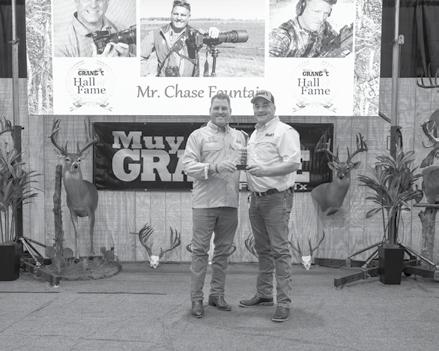
With approximately 300 winners, the contest itself has never been questioned to be “Muy Grande” as it only continues to grow in size and categories. Garza’s daughter and co-owner, Imelda Sharber, said three new members were inducted into a prestigious group, the Muy Grande Hall of Fame.
“My dad felt there were men and women who contributed a lifetime to whitetail deer hunting, wildlife conservation, and game management,” Sharber said. “He believed
their contributions ultimately led Texas to be the hunting capital of the world and deserved to be honored.”
These phenomenal inductees include Texas Parks and Wildlife Department photographer Chase Fountain, and two wildlife conservationists, the late Fred “Ted” Rhodes and Wayne Mann.
Each year, a rancher and guide are also recognized for their efforts toward responsible direction within the hunting industry. Guide of the Year was earned by Russell
Remember when a hunter was measured by how well he shot, and not how much he spent? When memories were measured in curly tails, not dollar bills? We do. And that is why we created the Spandau S2. A reliable, extremely well balanced waterfowl gun built around the Inertia operating system for unmatched performance at a price that shows that you still know the true measure of a hunter.



By Nate Skinner
Temperatures are hot, and so is the action for largemouth bass. Anglers are using a variety of tactics to consistently put numbers of fish in the boat. From schooling activity in open water to fish holding tight to deep-water structure, plenty of bass are being found.
Lake Fork guide Andrew Rickman has been targeting main lake points in 10-20 feet of water for solid largemouth. He is focusing on specific areas off points that contain brush piles or trees with large root balls.
“There have been small groups of three to five larger bass holding tight to brush and tree roots along main lake points,” Rickman said. “I have been using side imaging to find where these types of structure are situated on the points. Then, I’ve been using forward-facing sonar to dial in where the fish are holding in order to make accurate casts.”
Rickman’s go-to bait presentation has been Texas-rigged, large plastic worms in a plum color with a 3/8to 1/2-ounce weight. He’s also been throwing a 6-inch swimbait rigged on a 1/2-ounce jig head when the fish seem to be suspended in the
brush or tree roots, rather than on the bottom.
Most of the bass that Rickman’s anglers are catching have been in the 5-6 pound range, with a few in the 8-9 pound class or larger.
“A thermocline seems to be devel oping on Fork right now,” Rickman said. “As this becomes more estab lished, the fish will likely push up shallower.”
Guide Ander Meine, has been spending a lot of time on Decker Lake where he’s been finding schools of bass in the 1-3-pound range, feeding aggressively.

“If you like to catch fish, it’s a great time of year to be on Decker,” Meine said. “We’ve been catching anywhere from 30 to 50 bass per trip.”
Meine has been targeting stretches of grass in 3-12 feet of water early in the morning with finesse worms on a drop-shot rig. The bass have been scattered over the grass, and specific areas have been holding concentrations.
“You just have to cover the grass until you get a bite,” he said. “Once you catch a fish, you can usually stay in that same area and catch quite a few more before the action slows down.”
Later, Meine has been moving
out to open water and looking for schools of fish. The schools have been coming up to the surface and busting swarms of shad. Various soft plastics are working well on schooling fish.
“Those schooling fish just chase the shad around,” Meine said. “There’s no real pattern to what they are doing. They can literally show up anywhere in the lake at any time.”
When the schooling action ends later in the day, Meine said the fish have been settling down along the outside edges of grass in 10-15 feet of water. Drop-shot rigs have been drawing strikes.
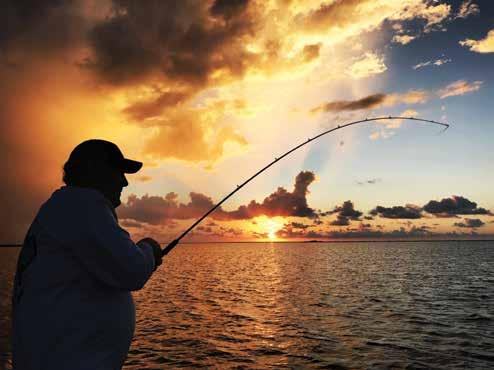
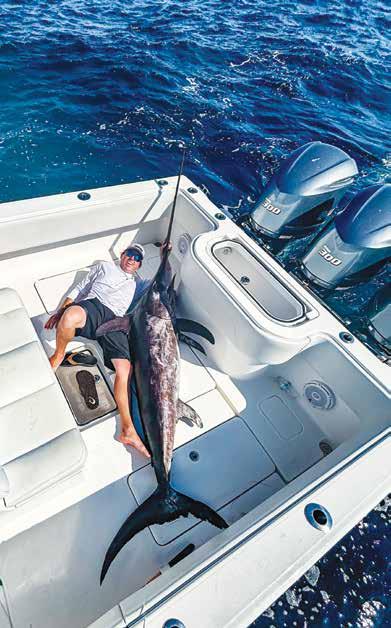
By Nate Skinner For Lone Star outdoor newS
On a recent outing into the offshore waters of the Gulf of Mexico, Avery Fuller, his wife, and a group of buddies set out to target swordfish. Fuller is a well-versed offshore angler, but had not spent a lot of time specifically targeting swords. Intel from some other swordfish anglers helped put them in the right zone, about 100 miles southeast of the Galveston jetties. They ended up hooking a large swordfish that proved to be nearly too much for their equipment. Hours later, they landed the massive fish that stretched to 9.5 feet in length and was estimated at over 200 pounds.
“We started off fishing an area in 1,600 feet of water that had varying bottom features and depth changes nearby,” Fuller said. “I had successfully caught one swordfish prior to this trip in a little bit shallower water just a few miles from where we were fishing, but that fish was caught at nighttime. None of us had landed one during daylight hours.”
After 45 minutes without a bite, Fuller and crew decided to
By Robert Sloan For Lone Star outdoor newS
Located on the middle Texas coast, Port O’Connor is best known for one thing — fishing. And over the years, the fishing for trout and reds has been some of the best in the state. And when it comes to offshore fishing, the wrecks and rigs attract a wide variety of fish including red snapper, ling, king mackerel, dorado and even big blue marlin.
Over the past few years this sleepy little fishing town, located at the end
of the road on Hwy. 185, has come to life. There are two convenience stores built to accommodate trucks pulling boats and looking to load up with gas and any sort of fishing provisions.
“On my first trip to Port O’Connor I was amazed,” said angler Fred Hernandez. “It’s literally at the end of the road. There are bait camps, tackle stores, a grocery store, plenty of guides and ramps to launch your boat. What more could a fisherman want?”
“The number of houses that have been built on the Intracoastal
The Richard Hart Education Endowment has been established by Wildlife Forever and the Texas Freshwater Fisheries Center to raise $100,000 to fund the Richard Hart Educator of the Year Award in perpetuity.
The national award recognizes teachers nationwide who promote the Fish Art program and was recently named after Hart to honor his impact on the Fish Art program both in Texas and nationally.
The endowment also will facilitate an Art of Conservation Educator Summit at the fisheries center in Athens or at the Wonders of Wildlife Museum & Aquarium in Springfield, Missouri.
Hart was instrumental in raising the necessary funds to build the Hart-Morris Conservation Center located at the fisheries center and facilitated Texas becoming involved in the National Fish Art Contest. Since 2007, the Texas Fish Art division has led the nation for youth participation and this year, a Texas student, Mia Macias, won National Best of Show. Hart was inducted into both the Texas Freshwater Fisheries Hall of Fame and the National Freshwater Hall of Fame. He died in 2016.

TFFC Director Tom Lang confirmed that founding donors will have the opportunity to be recognized in the center’s permanent display honoring Hart, educators and the Texas Fish Art program.
“Youth educators are truly the future of fishing and conservation,” said Hart’s friend and fellow Fish Art judge Ron Gard. “There is no better cause, in my opinion, than to help inspire kids to learn about and love our natural world, and maybe also discover their artistic abilities.”
Those interested in becoming founding donors may contact Pat Conzemius, president of Wildlife Forever, at (763) 253-0222.
A fourth artificial reef site was added to the Sabine Pass area June 27-28.
Texas Parks and Wildlife Department’s Artificial Reef Program, in partnership with the nonprofit organization Friends of Sabine Reef, added the new 20-acre reef, named HI-54 Shallow, approximately 8 miles from the Sabine Pass jetty and 1.7 miles from the coastline of Sea Rim State Park.
HI-54 Shallow consists of artificial materials deployed to help create a new artificial reef habitat for aquatic life as well as enhance fishing opportunities for anglers and divers along the Gulf of Mexico.
The Gulf of Mexico’s sea floor is mostly comprised of a vast, featureless flats of mud and sand, and lacks natural reefs or structures for marine animals and plants to settle upon. Artificial reefs are made up of structures and/or materials placed to help support a vast array of natural reef-like communities.
Materials include decommissioned drilling rigs in the Rigs-to-Reefs Program, highway bridge materials and other sources of concrete and heavy-gauge steel in the Nearshore Reefing Program, and large marine vessels in the Ships-to-Reefs Program.
All of the established reef sites are known to attract a variety of fish species, including red snapper, cobia, mackerel and sharks, that live within the reefs to feed and breed. HI-54 Shallow is located in shallow water (21 feet deep), and will also attract juvenile fish as well as various coastal fish species, such as spotted seatrout and red drum.
Bob Sealy, the owner of Sealy Outdoors, died July 2 in Tyler at the age of 75.

X-Series Spinning Reels are crafted with a lightweight aluminum body for unparalleled performance and durability. Combining cutting-edge technology, unmatched strength, and a feather light design, they deliver an impressive 24 lbs of max drag for extreme stopping power. Available in three sizes—2500, 3000, and 4000—and featuring a 6.2:1 gear ratio, the X-Series offers versatility and tournament-grade performance.
okumafishingusa.com


A lifelong resident of Rayburn County, Sealy owned Sealy Outdoors with his wife, Donna, for more than 48 years. Previously, he owned Pineypoint Grocery at Sam Rayburn and was a former real estate sales manager.
In the 1980s, Sealy began competing in Bassmaster tournaments and helped fund the initial B.A.S.S. tournament going to Sam Rayburn. Sealy created the original hourly big bass tournament event in the 1980s to reward amateur anglers. As the founder of the Big Bass Splash tournaments, he attracted thousands of anglers from across the nation, rewarding more than $30 million in cash and prizes as of 2024. Sealy also used his platform to raise millions of dollars for charities such as the Ronald McDonald House and St. Jude Children’s Research Hospital.
In 2014, Sealy was inducted into the Legends of Outdoors Hall of Fame and, in 2017, he was inducted into the Bass Fishing Hall of Fame.


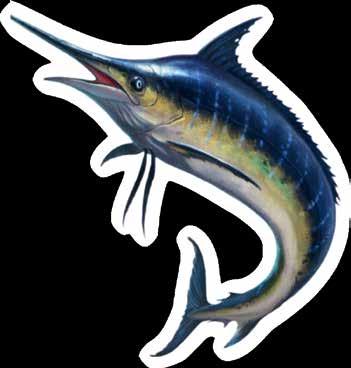

ALAN HENRY: Water clear; 81 degrees; 0.08’ high. Largemouth bass are slow. Crappie are good on minnows.
AMISTAD: Water stained; 85 degrees; 69.68’ low. Largemouth bass are good on top-water poppers, frogs, soft plastic jerkbaits, Ned rigs and drop shots. White bass are good on spoons, white grubs and crankbaits.
ARLINGTON: Water stained; 85 degrees; 1.18’ low. Largemouth bass are good on top-waters, chatter baits, crankbaits and Texas rigs. White bass are good on slabs. Catfish are good on cut bait.
ARROWHEAD: Water lightly stained; 85 degrees; 3.92’ low. Crappie are fair jigs and minnows. Catfish are good on fresh cut shad.
ATHENS: Water stained; 85 degrees; 0.37’ high. Largemouth bass are fair on shaky heads and top-water frogs. Crappie are fair on minnows.
AUSTIN: Water stained; 87 degrees; 0.53’ low. Largemouth bass are good on swimbaits, plastic worms and top-waters.
B A STEINHAGEN: Water stained; 75 degrees; 1.00’ low. Largemouth bass are good on soft plastics and frogs. Crappie are good on jigs. Catfish are fair are cut bait.
BASTROP: Water stained; 90 degrees. Largemouth bass are good on top-waters, swimbaits and Ned rigs.
BELTON: Water lightly stained; 81 degrees; 9.08’ high. Catfish are good on live bait and fresh cut bait.
BENBROOK: Water stained; 80 degrees; 2.76’ high. Largemouth bass are good on soft plastics. Crappie are good on minnows. Catfish are good on shrimp and stink bait.
BOB SANDLIN: Water lightly stained; 89 degrees; 0.10’ high. Largemouth bass are good on chatter baits and creatures. Crappie are good on jigs and minnows. White bass are fair on grubs and spinner baits. Catfish are good on stink bait and fresh cut bait.
BOIS D’ARC: 85 degrees; 0.17’ high. Largemouth bass are good on top-waters, wacky rigs and Texas rigs.
BRAUNIG: Water stained, 88 degrees. Redfish are fair on live bait and crawfish. Catfish are slow.
BROWNWOOD: Water stained; 85 degrees; 1.94’
low. Largemouth bass are good on jigs, shaky heads, and top-waters. Crappie are good on minnows and jigs. White bass are fair on crankbaits and jigs. Catfish are slow.
BUCHANAN: Water lightly stained; 87 degrees; 8.99’ low. Largemouth bass are good on topwaters, swimbaits and crankbaits. Stripers are good on jigs and crankbaits. White bass are good on jigging spoons and small crankbaits.
CADDO: Water stained; 80 degrees; 1.25’ high. Largemouth bass are good on top-waters, buzzbaits, chatter baits and senkos.
CALAVERAS: Water lightly stained; 85 degrees. Largemouth bass are fair on soft plastics. Redfish are good on live bait and gold and silver spoons. Catfish are good on cut bait and shad.
CANYON LAKE: Water stained; 85 degrees; 23.71’ low. Largemouth bass are good on spooks, buzzbaits and neko rigs.
CEDAR CREEK: Water stained; 82 degrees; 0.01’ high. Hybrids and white bass are good on spinner baits and slabs. Crappie are fair on minnows and jigs. Catfish are good on cut shad.
CHOKE CANYON: Water stained; 86 degrees; 29.49’ low. Largemouth bass are good on soft plastic worms and crankbaits. Crappie are good on minnows and grubs. Catfish are fair on cut bait and stink bait.
CONROE: Water stained; 87 degrees; 0.41’ high. Largemouth bass are slow. Hybrids are good on live bait and jigging spoons. Crappie are fair on minnows or jigs. Catfish are good on stink bait, liver and prepared baits.
EAGLE MOUNTAIN: Water stained; 84 degrees; 0.16’ low. White bass are good on slabs. Crappie are fair on jigs. Catfish are good on punch bait.
degrees; 0.15’ high. Largemouth bass are good on chatter baits, top-waters and Carolina rigs. Crappie are good on jigs and minnows.
FT PHANTOM HILL: Water stained; 80 degrees; 6.31’ low. Largemouth bass are good on top-waters. Hybrids and white bass are good crankbaits and live shad.
GRANBURY: Water stained; 88 degrees; 0.13’ low. Largemouth bass are fair on soft plastics and crankbaits. White bass are good on slabs. Striped bass are good on live bait and trolled Alabama rigs. Crappie are good on minnows and jigs. Catfish are fair on cut bait.
GRANGER: Water lightly stained; 85 degrees; 1.05’ high. Largemouth bass are slow. Crappie are good on minnows and jigs. White bass are good on slab spoons. Catfish are good on shad and Zote soap.
GRAPEVINE: Water clear; 85 degrees; 18.92’ high. Largemouth bass are fair on soft plastics. White bass are fair on jigging spoons.
GREENBELT: Water stained; 80 degrees; 47.22’ low. Largemouth bass are good on soft plastics. Crappie are fair on jigs and minnows. Sand bass are good on slabs. Catfish are good on minnows and worms.
HUBBARD CREEK: Water stained; 80 degrees; 12.15’ low. White bass are good on slabs. Catfish are fair on cut bait.
JACKSONVILLE: Water lightly stained; 90 degrees; 0.11’ high. Largemouth bass are fair on top-waters, drop shots and Texas-rigged soft plastics.
JOE POOL: Water lightly stained; 80 degrees; 6.07’ high. Largemouth bass are fair on soft plastics. White bass are fair on slabs.
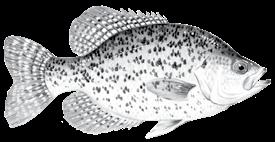
FALCON: Water stained; 85 degrees; 46.61’ low. Largemouth bass are good on plastic worms and crankbaits. Crappie are slow. Catfish are good on fresh cut or live bait.
FAYETTE: Water stained; 95 degrees. Largemouth bass are fair on Carolina rigs.
FORK: Water stained; 76
Crappie are fair on minnows and jigs.
LAKE O’ THE PINES: Water stained; 87 degrees; 4.37’ high. Largemouth bass are good on Texas-rigged worms, jigs and wacky rigs. Crappie are good on minnows. Catfish are good on cut bait.
LAVON: Water lightly stained; 76 degrees; 7.82’ high. Largemouth bass are fair on worms and char-
treuse spinner baits. Crappie are fair on minnows and jigs. White bass are fair on swimbaits and slabs. Catfish are good on chicken liver, earthworms and punch bait.
LBJ: Water stained; 83 degrees; 0.18’ low. Crappie are good on jigs and minnows.
LEWISVILLE: Water stained; 83 degrees; 6.33’ high. White bass are fair on slabs, jigs and live bait. Hybrid stripers are fair on slabs and jigs. Crappie are fair on minnows and jigs. Catfish are fair on shad and punch bait.
LIMESTONE: Water lightly stained; 92 degrees; 0.04’ low. Largemouth bass are fair on topwater, Texas rigs, swim jigs, and Carolina rigs. Crappie are good on minnows. White bass fair on spoons. Catfish are fair on cut bait, minnows and shad.
LIVINGSTON: Water stained; 75 degrees; 0.04’ high. White bass are good on slabs. Catfish are good on cut shad.
MARTIN CREEK: Water lightly stained; 91 degrees; 0.18’ low. Largemouth bass are good on crankbaits and shaky-head worms. Crappie are good on minnows. Catfish are good on live bait and nightcrawlers.
low. Largemouth bass are fair on swimbaits and topwaters. Crappie are good on jigs. Catfish are good on chicken liver and stink bait.
OAK CREEK: Water lightly stained; 80 degrees; 16.65’ low. Largemouth bass are good on crankbaits and soft plastics. Crappie are good on jigs. Catfish are fair on live bait.
PALESTINE: Water lightly stained; 89 degrees; 0.22’ high. Crappie are fair on minnows.
POSSUM KINGDOM: Water stained; 86 degrees; 0.08’ high. Largemouth bass are slow. Stripers are fair on live bait and spoons. Sand bass are slow. Catfish are fair on cut shad.
PROCTOR: Water stained; 85 degrees; 1.74’ low. Hybrids are fair on slabs, crankbaits and live bait.
RAVEN: Water stained; 80 degrees. Largemouth bass are good on worms and topwaters. Crappie are good on grubs and crappie bites.

RAY HUBBARD: Water stained; 86 degrees; 0.01’ high. White bass are good on slabs. Crappie are good on minnows. Catfish are fair on cut shad.
MEREDITH: Water stained; 75 degrees; 46.39’ low. Largemouth bass are good on minnows and artificials. White bass are good on jigs and slabs. Walleye are good on minnows and grubs. Catfish are fair on crawlers and minnows.
NACOGDOCHES: Water stained; 87 degrees; 0.41’ low. Largemouth bass are good on deep-diving crankbaits and Carolina rigs. Crappie are good on minnows and jigs. Catfish are slow.
NACONICHE: Water stained; 88 degrees; 0.50’ high. Largemouth bass are good on Carolina rigs and Texas rigs. Crappie are good on minnows. Catfish are slow.
NASWORTHY: Water lightly stained; 86 degrees. 0.59’ low. Largemouth bass are good on chatter baits, spinner baits,and soft plastics. Crappie are good on jigs. Catfish are fair on cut bait and stink bait.
O H IVIE: Water lightly stained; 83 degrees; 29.73’
RICHLAND CHAMBERS: Water lightly stained; 82 degrees; 0.22’ high. White bass are fair on slabs. Hybrid stripers are fair on live shad. Crappie are slow. Catfish are fair on punch bait.
SAM RAYBURN: Water stained; 87 degrees; 7.68’ high. Largemouth bass are good on top-waters and soft plastics. Crappie are fair on jigs and minnows. White bass are fair on jigging spoons. Catfish are fair on cut bait and shad.
SOMERVILLE: Water lightly stained; 85 degrees; 1.03’ high. Crappie are fair on jigs and minnows. White bass are good on spoons and shad. Hybrids are good on cut bait. Catfish are good on cut shad and punch bait.
SPENCE: Water stained; 80 degrees. 48.71’ low. Largemouth bass are fair on walking baits and frogs. White bass are fair on spoons. Catfish are fair on cut bait and stink bait.
n Saltwater reports Page 21
TEXANA: Water stained; 80 degrees; 0.58’ low. Largemouth bass are slow. Catfish are slow.
TEXOMA: Water stained; 75 degrees; 2.82’ high. Largemouth bass are slow. Striped bass are good on top-waters and live bait. Catfish are good on cut shad and prepared baits.
TOLEDO BEND: Water lightly stained; 91 degrees; 0.39’ high. Largemouth bass are good on frogs, top-waters, crankbaits and Texas rigs. Crappie are fair on minnows.
TRAVIS: Water stained; 87 degrees; 46.31’ low. Largemouth bass are good on spoons and Texas-rigged worms and craws.
TWIN BUTTES: Water stained; 84 degrees; 35.50’ low. White bass are good on top-waters and slabs. Catfish are fair on cheese bait.
WACO: Water stained; 80 degrees; 4.83’ high. Crappie are fair on minnows. White bass and hybrids are fair on slabs and live bait. Catfish are fair on cut and prepared baits.
WALTER E LONG: Water stained; 84 degrees. Largemouth bass are good on top-water frogs, worms, swimbaits and spoons.
WHITNEY: Water stained; 84 degrees; 0.74’ high. Largemouth bass are slow. Striped bass are fair on live shad. Crappie are fair on jigs and minnows. White bass are slow. Catfish are good on cut shad.
WORTH: Water stained; 84 degrees; 1.05 ‘low. White bass are good on slabs. Crappie are fair on jigs. Catfish are good on punch bait.
—TPWD
TAWAKONI: Water lightly stained; 80 degrees; 0.49’ high. Largemouth bass are good on frogs, crankbaits and soft plastics. Hybrids and white bass are good on live bait and slabs. Crappie are fair on minnows and jigs. Catfish are good on prepared baits.

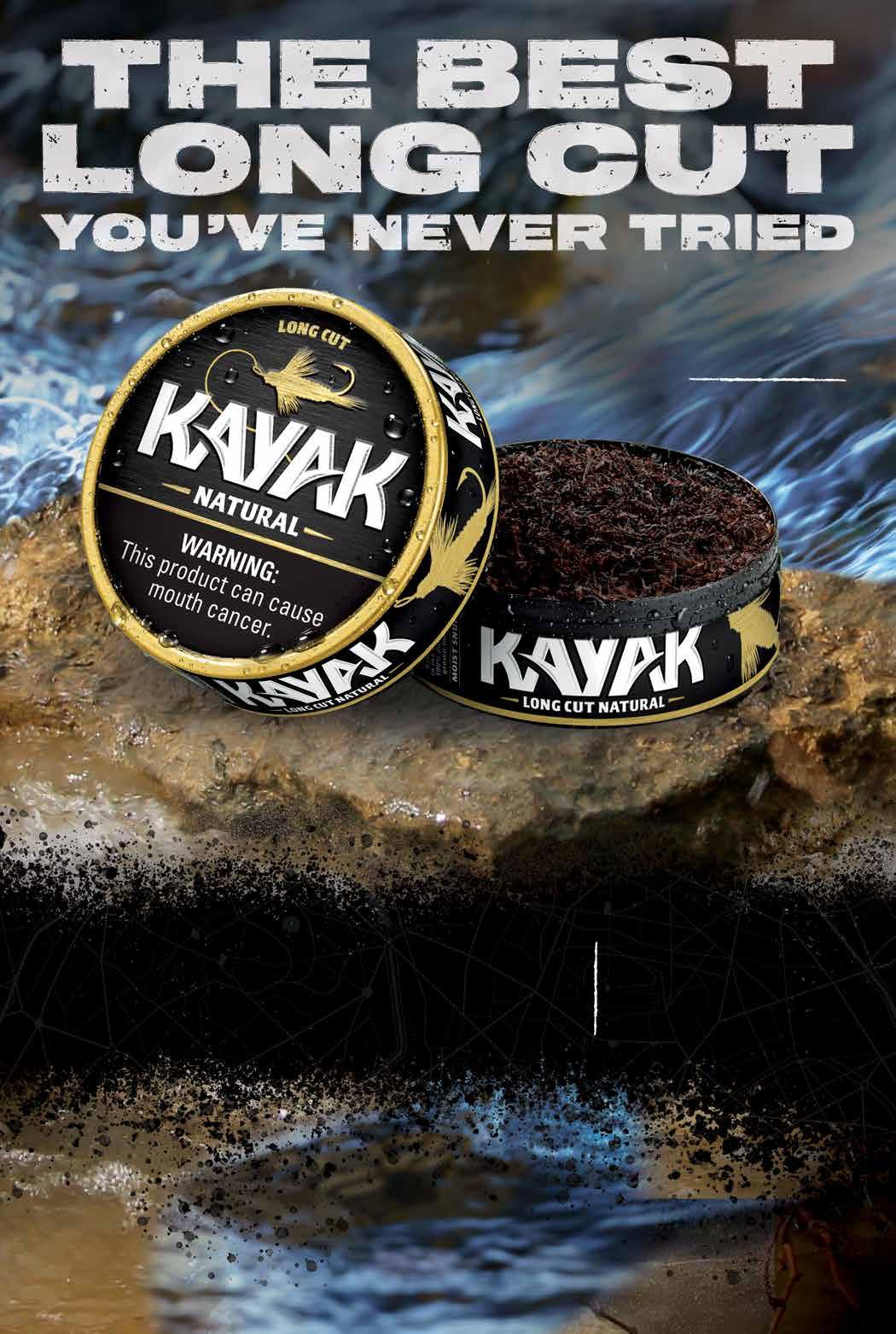
GROUP USES TEXAS HOGS TO WIN
LOUISIANA HOG CONTESTS
Louisiana Department of Wildlife and Fisheries enforcement agents arrested six subjects for their roles in allegedly committing fraud in hog hunting contests in Caldwell and Bienville parishes. Agents arrested Trace Davis, 30, of Longville, Hunter Webb, 27, of Pitkin, Colby Bushnell, 26, of Dry Creek, Davy Haymon, 35, of Pitkin, Nathan Granger, 34, of Vinton, and Don Pollard Jr., 40, of Pitkin, for hunting contest fraud and criminal conspiracy. Davis was also arrested for obstruction of justice. Webb was also cited for hunting under a hunting license suspension. Agents received information about the six subjects catching wild hogs in Texas before two different hog hunting contests in Louisiana and entering them into the contests, which they won. Agents obtained evidence that revealed the six subjects caught hogs in Texas to be used for the Dingler Wild Hog Roundup and the Swamp Time Hog Hunt. The rules of both hog hunting contests stipulated that the hogs must be caught during the contest dates and be caught in Louisiana. Hunting contest fraud brings up to a $3,000 fine and one year in jail.
A vessel crashed onto the Galveston Jetty with five people on board. The Coast Guard was contacted and sent boat and helicopter crews. The air crew hoisted three injured people and transferred them to the University of Texas Medical Branch Hospital. A search for the others encompassed 50 combined hours and covered 293 square miles. After one of the missing boaters was discovered deceased by partner agencies the next day, the search was suspended for the final victim. The search also involved Texas Parks and Wildlife Department, the Galveston and Harris County Sheriff’s Offices and multiple good Samaritan boaters.
Obstruction of justice carries up to a $10,000 fine and five years in jail.
NEW K9 CREWS JOIN FORCE
Two newly certified Texas Game Warden K9 Teams, K9 Roux and Game Warden Tim Tokash, and K9 Piper with Game Warden Dustin Fleming, completed an 8-week training course and are now certified in police search and rescue, which consists of tracking, off-lead open area searches, and evidence article recovery. K9 Roux
is also certified in human remains detection and K9 Piper is certified in narcotics detection. The dogs are now available for wardens, federal, state, county, and local law enforcement agencies.
MAN LOSES
CONSCIOUSNESS OFFSHORE
A passenger lost consciousness while aboard a 61-foot fishing boat about 28 miles south of Galveston Inlet. The Coast Guard was contacted and launched boat and helicopter crews. The heli-
copter crew transported the man to the University of Texas Medical Branch in Galveston in stable condition.
TIP LEADS TO CATCHING GROUP WITH ILLEGAL HAUL OF FISH, CRABS AND SHRIMP
San Patricio County game wardens received a tip via the Operation Game Thief hotline regarding several individuals suspected of illegally taking large quantities of fish and other aquatic resources with illegal means. The


caller reported that the individuals were hiding coolers in the brush. Wardens contacted the suspects and discovered they had used an illegal oversized cast net to catch approximately 60 pounds of shrimp, undersized redfish, undersized blue crab and several other species. Citations and OGT reward are pending.
TWO ADULTS, CHILDREN RESCUED AFTER BOAT CAPSIZES After receiving a report of a capsized vessel with two adults and two children, the Coast Guard launched a response boat and crew to respond. The crew sighted the people hanging onto the vessel, rescued the adults and children and transported them to Galveston Bait and Tackle. There were no reported injuries.

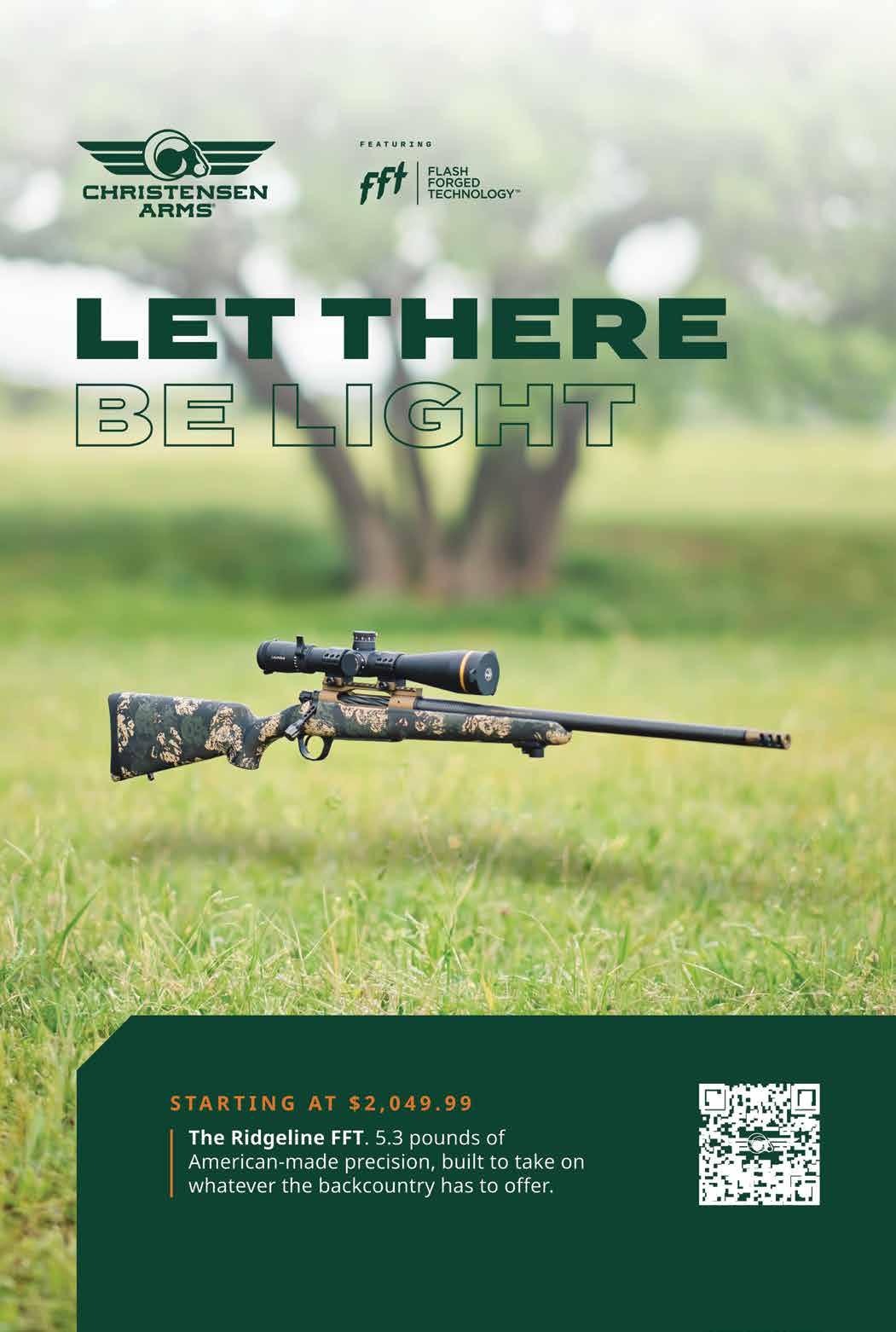





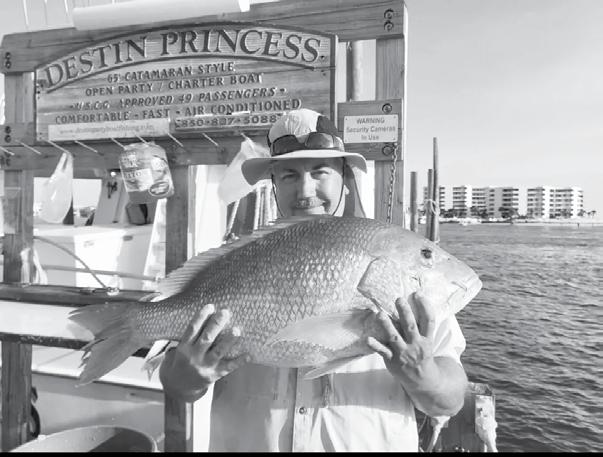
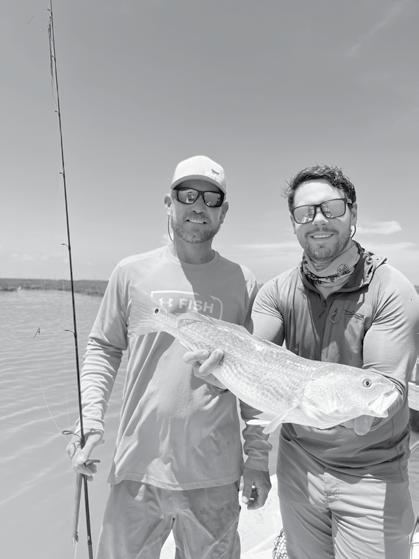


Continued from page 8
Waterway and on the front beach is crazy,” said Jim Edson, a Houston resident who has discovered POC. “The only drawback is the number of people coming here,” he said while cleaning trout and a couple of reds at the Froggie’s bait camp fish cleaning table.”
Froggie’s has been the place to get it all when you’re heading out to fish the bays, backwater lakes, the jetties, the surf and offshore. There are boat ramps and tackle at the store, along with live bait and dead bait like shrimp, croaker, perch and mullet. For the jetty anglers, just about all the stores stock up on dead baits like Spanish sardines, mullet, squid and fresh dead shrimp.
Another marina in POC is Clarks. Although it has been in this town for decades, it was recently sold and the new owners are resurrecting the property with a new place to eat, new fish cleaning tables and private boat docks. It should be opening within a few months.
“I’ve been fishing out of POC for years,” said Ron Arlitt, a fishing guide who does a lot of fishing at the jetties. “I like to fish the jetties, especially during the summer and fall months. Right now, the jetties are holding very good numbers of redfish and black drum.”
Arlitt has been using live shrimp and croaker along the rocks in 5-20 feet of water. The redfish and black drum are being caught on chunked Spanish sardines and fresh dead shrimp.
“You can usually find reds and black drum over the rocks in 10 to 25 feet of water,” Arlitt said. “Soon the surf along Matagorda Island will be the place to be when it comes to catching trout. When the water is green to the beach, it’s time to fish the surf.”
The back bays of POC are scattered with lots of backwater lakes, and local guide Jeff Coffey specializes in fishing the shallow water flats that stretch for miles. He also spends a lot of time wade-fishing along the bay side of Matagorda Island.

“For the past couple of weeks we have been catching good numbers of trout, reds and black drum on the flats in 2 to 3 feet of water,” he said. “The trout have been best on live croaker fished in the guts in about 4 feet of water along Matagorda Island. We’re catching fair numbers of slot trout in the bays. But reds and black drum are best on chunks of Spanish sardines or fresh dead shrimp. With the new limits along the entire Texas coast, a lot of the fishermen I take out don’t mind targeting black drum. They are tasty and there are lots of them out there.”
Commercial Gulf shrimp season reopens July 15 in state and federal waters.
According to Texas Parks and Wildlife Department, the Coastal Fisheries Division uses data from samples collected during routine trawls and bag seines in June to determine a reopening date.











23
24
25





Capt. Chris Elliott said that he and his anglers have been throwing top-waters for speckled trout early in the mornings over shallow flats in the Laguna Madre out of Corpus Christi while wade-fishing. Later in the day they have been moving out to deeper water and switching to soft plastics. Stretches with 1-2 feet of water have been producing plenty of action for the first hour or two of the day. After that, the fish have been gradually pushing out near drop-offs, as they follow the baitfish into deeper water.
“The storm surge our bays received really flushed out the estuaries and improved our water quality and visibility,” Elliott said. “This turned the trout bite on, and we’ve been catching a lot of fish from 20 to 25 inches. There have been a lot of redfish in the mix as well, but most of them have been on the small side at 20 inches or shorter.”
Elliott said grass beds with scattered sand pockets have been holding the highest concentrations of fish. Most of the action has been taking place near the edges of the grass, rather than in the middle of the sand pockets and potholes.
At Getaway Lodge in Port Mansfield, Capt. Steve Ellis said the storm surge from recent tropical activity pushed a lot of solid fish up on the flats. He’s been consistently seeing trout in the 25-30-inch range lurking over grass beds in 1-3 feet of water.
Ellis said the recent influxes of Gulf water also pushed good numbers of fish into the Port Mansfield Harbor. Getaway Lodge guest Jake Phillips actually caught and released a tarpon in the harbor from the lodge dock, hooked on a top-water lure. Phillips saw the fish roll a few feet from the dock and quickly pitched the top-water in its direction. The fish attacked the lure, and the fight was on.
Continued from page 8
On Fayette County Reservoir, Rick Denton has been targeting ledges and drop-offs in 1625 feet of water with shaky heads, Carolina rigs, and drop shots to catch numbers of bass. Cloudy days have been producing more aggressive action.
“The bite is extremely light and the fish are pretty lethargic right now,” Denton said. “You have to fish deep and employ a super finesse-like retrieve in order to catch them consistently. Once you find them stacked up along a drop off, you can catch them one after the other if you use the right retrieve.”
Most of the bass Denton and his anglers have been catching have been anywhere from 2-8 pounds.
“The fish have been schooling together with fish of similar sizes,” Denton said. “The largest bass have been caught on Carolina rigs lately, and have all come from the deepest areas not far from where we have encountered schools of smaller fish.”
Continued from page 4
issue is spurred by dogs from other countries entering the U.S. unvaccinated. Until now, a simple vaccination certificate has been enough to prove that a dog was vaccinated.
Politicians have taken notice, especially in states bordering Canada.
“I have heard understandable concerns and anger about this new CDC regulation for dogs crossing the border, and I am working with my colleagues to push for a change that works for travelers and keeps people and animals safe,” said Minnesota Sen. Amy Klobuchar.”




Solution on Page 22

ACROSS
1) Trout species
4) River flowing through Greenville
7) Sheep hunters’ org.
9) Shotgun brand
10) Rifle brand
12) Creature bait brand
15) A Great Lake
19) Coastal bay
20) The bronzeback
23) DFW-area lake, ___ Mountain
27) Ammo brand
29) Blue, green or cinnamon
30) Reel type
32) One of the bluegill
33) Hunting boot brand
34) Tree-eating furbearer
35) Thermal optics brand
37) An African antelope
39) Medina County’s seat
40) Group of emus
42) Group of owls
2 bell peppers
2 large onions
1 jar of mole
4 serrano peppers
1 cup vegetable oil
1 50-lb. feral hog
Salt Fajita seasoning Chili powder
DOWN
1) Safari destination 2) Pike-fishing province
3) Kingsville’s county 4) Shotgun type, ____-auto
5) An archery craftsman
6) Texas lake near Houston 8) Fishing line brand
10) San Antonio’s county 11) Travis County’s seat 13) Fishing hook maker 14) Goose decoy brand
16) Central Texas lake 17) One of the crappie
18) Zimbabwe’s capital
19) Slang for the wigeon
20) A shooting sport
21) San Marcos’ county
22) Tractor brand
24) The lunker largemouth
25) The sandhill crane fledgling
26) Sinker type
28) Plastic worm type
30) The young bear
31) The arrow’s main body
33) Group of rattlesnakes
36) A deer favorite
38) Mule deer hunters’ org.
41) The baby fox

The C&H Precision family of companies announced the acquisition of Paragon, a firearms cleaning solution company based in Florida.
Silencer Central, a large American silencer dealer, announced a strategic partnership with EuroOptic.com, a leading resource in optics, firearms and shooting accessories.
The Murray Road Agency is looking for a communicator with experience in public relations, communication and marketing.
Okuma/FishLab is seeking a marketing manager to work with the sales and product development teams.
George C. Freeman III of Richmond, Virginia, became Delta Waterfowl’s new chairman of the board on July 1.
Outtech Sales Services is seeking candidates for regional manager positions nationwide.
Wildlife Forever announced a merger and acquisition with the Future Angler Foundation of Forestville, Wisconsin. The merger includes plans for Wildlife Forever to continue operating the foundation’s programs and brands.
The online community and marketplace Guidefitter announced an expanded, multiyear partnership with GSM Outdoors. The agreement brings the entire 53-brand GSM Outdoors brand portfolio onto the Guidefitter platform.

Feral hog quisada
Cut the young feral hog in 1/2-inch pieces. Using a 5-gallon pot, pour in about 1 cup of vegetable oil. Dice up the bell peppers and onions. Heat the pot. When the oil gets hot, place the diced bell peppers, serrano peppers and onions in the pot and lightly brown. Place the diced feral hog in the pot and add about 1 quart of water. With a large spoon, stir and cook for about 1 hour. Add salt, fajita seasoning and chili powder. Add the jar of mole and continue to stir to keep the meat from sticking. Add water as needed to have a gravy texture. Cook for an additional 2 hours until meat is tender. Serve with flour tortillas and pico de gallo.
—TPWD
2 lbs. snapper, cut into 1-inch strips
2 eggs
2 tbsps. milk
1/2 tsp. salt
1/2 tsp. freshly ground pepper
1/2 cup flour
1 tsp. cumin
1 tsp. chili seasoning
5 tbsps. butter
2 tbsps. olive oil
2 limes, halved
Pat snapper fingers dry with paper towel. Whisk together eggs and milk in a small bowl. Combine salt, pepper, flour, cumin and chili seasoning on a shallow plate. Coat fish fingers with flour mixture; dip in egg mixture, then into flour mixture. Set aside to dry for 5 minutes. Melt the butter and oil together in a heavy skillet over moderate heat. When butter foams, add the fingers; cook 3-5 minutes on each side until browned and cooked through. Serve with lime halves.
—Florida Dept. of Agriculture
fishing activity on the lakes had altered the behavior of the fish, which in turn led to a decrease in angler catch rates.
The study at Toledo Bend and Lake Fork focused on seasonal habitat use, the movement and home range of largemouth bass and how it correlated with angling activity. It also explored the effects of boat motor noise and angling activity on fish behavior.
On both lakes, biologists monitored the movement patterns of individual largemouth bass ranging from 16-24 inches in length. Biologists implanted radio transmitters into 43 fish at Toledo Bend and 38 fish at Lake Fork to track them over a 2-year period.
When the results came in, biologists were intrigued by the movement and home ranges of largemouth bass.
“Some of the biggest surprises were the small home ranges that these fish actually had and how little of an area they occupied throughout the course of a year,” said Jake Norman, Inland Fisheries Division Tyler district supervisor. “I think most anglers and even biologists, me included, expected to see more seasonal movement especially of individual fish. Overall, we just didn’t see that happen on a larger scale. For example, on Lake Fork, the average total home range these fish occupied was 60 acres or less over the course of the entire study, and the average core use area was just over 10 acres.”
Norman said the bulk of these fish have home areas and don’t migrate throughout the lake, despite the time of year, lake levels or weather.
“There wasn’t a large movement of fish back and forth from the bank to offshore structure,” said Norman. “It highlights that some fish just like to stay in shallow areas and some just like to be more offshore.”
The study also revealed that fish
quickly react to boat noise. Biologists indicated that 59 percent of all the relo cated fish reacted to boat noise in some capacity.
Fish size was a relevant indicator for how likely they were to react, with bass over 20 inches more likely to react to boat noise. In addition, fish that were in vegetation reacted more often than when vegetation wasn’t present.
“A big ‘take home’ of this study is how important it is to be as stealthy as pos sible when fishing for largemouth bass,”
Norman said. “When anglers are sightfishing and see a fish on a bed, they should do everything they can to make a cast to the fish before it knows they are there.”
In terms of structure and habitat, the study found that, in general, large mouth bass exhibited habitat prefer ences.
The results of the study provide in sight to anglers on how to target fish and to fisheries biologists in their ap proach to management.

Overall, when it comes to locations, the traditional target spots proved to be the best when angling for largemouth bass.
“The fish in these studies still selected more of what I call ‘high percentage spots’ like drops, points creeks and other habitat structure,” said Norman. “The places where anglers typically look for to target bass are the areas the fish are still utilizing the most. The study also shows that they are really educated and are wary when noting an anglers’ presence, which could correlate to the reported lower catch rates.”
The study indicated fish could also be found in featureless flats — areas that typically had less pressure from anglers, but were more spread out and less concentrated.
The results could also present fish-
eries managers with two different approaches to habitat installment and enhancement. The first is to concentrate efforts in the high percentage areas, and the second would install more habitat in the flats to help concentrate more fish into a small area around the habitat structures.
One additional impact for biologists could be how surveys are conducted.
“Utilization of shorelines in the fall when we do our electrofishing surveys was very low,” said Norman. “Since these fish weren’t shoreline-oriented in the fall, this is a component of the study for fisheries managers to consider and evaluate when conducting surveys.”
Continued from page 1
moorings and a lot of wind damage.”
Photos of the Full Stringer Lodge, on Hwy 60 near Matagorda Harbor, showed most of the shingles gone from the roof.
“Overall, we came out of it pretty good,” Kubecka said.
The pier at Linda’s Sylvan Beach Bait & Tackle in La Porte was severely damaged, as was the pier at Galveston Bait & Tackle.
The storm was initially expected to hit closer to the Coastal Bend, near Rockport, but shifted north and east as it approached the coast. Some of the areas farther south and west were happy to dodge a direct hit — but would have welcomed the rains.
The Lavaca County Office of Emergency Management said, “while we will unfortunately miss out on some much needed and beneficial rainfall from the storm, we are also very fortunate to miss out on any wind/water damage we could have sustained.”
In Port Aransas, the Deep Sea Roundup stayed on schedule and began July 11. In Salt Lake and Copano Bay, Capt. Alan Sckrobarcek reported no rain, no wind and no surge or tide.
Jay Watkins Sr., of Rockport, worked on his boat storage facility but said he could easily have fished the day of the storm.
“We’re back on the water tomorrow,” he said. The eastern side of the storm, as usual, brought the heaviest rains and strongest winds, keeping fishermen off the water. In Texas City, the storm surge was nearly 7 feet. However, levees in most areas protect up to 20 feet of storm surge, although boat ramps are expected to be closed and some damage is expected to the Texas City Dike.
As the storm moves north of Houston, officials are concerned about the Lake Livingston dam, where workers scrambled to finish repairs from heavy rain damage earlier this year before Beryl arrived. The dam is holding as of press time but is under failure watch.
South and West Texas ranchers, hoping for rains from the storm, were left disappointed with the lack of moisture.



The Second Amendment Foundation has filed a lawsuit seeking to overturn California’s recently adopted 11-percent excise tax on the sale of firearms, gun parts and ammunition.
The case was filed in San Diego County Superior Court by SAF, the California Rifle & Pistol Association, National Rifle Association, Firearms Policy Coalition and two private citizens. The defendant is the director of the California Department of Tax and Fee Administration, in his official capacity.
tion between us with me being a sportsman, the rooted connection is with our mutual love for our country,” Boyd said.
The hood of the No.76 Record Rack Chevrolet Silverado lists 65 names of America’s finest who have also been honored by attending the annual Bucks for the Brave sponsored by Record Rack.
Bucks for the Brave is an all-expense paid trip that will take place this fall. The events will be hosted at Trinity Oaks’ Thumbtack Ranch in Batesville, Texas. There will be both a men’s and women’s hunt with winners from each of these eight categories: Army Veteran, Marine Corps Veteran, Navy Veteran, Air Force Veteran, Coast Guard Veteran, Retired Firefighter, Retired Law Enforcement and Retired EMT.
—Cargill





“We are challenging the constitutionality of the tax, as adopted by Assembly Bill 28,” explained SAF founder and Executive Vice President Alan M. Gottlieb. “We contend in the lawsuit that this 11 percent tax is unconstitutional because it literally taxes conduct protected by the Second Amendment. There is no analogous evidence such a tax was ever applied at the time of the Founding era, as required by the 2022 Supreme Court Bruen ruling.”
The lawsuit asks the court to declare the excise tax on firearms and ammunition violates the Second Amendment, and to permanently enjoin the state from enforcing the provisions or collecting of the tax.
—SAF
CAROLINA
NASCAR Craftsman Truck Series Driver/ Owner Spencer Boyd is helping unveil a new look for his longest running marketing partner, Record Rack premium wildlife feed (owned by Cargill, Inc.). This marks the seventh season of the pair working together but the first race with Record Rack on Boyd’s new team, Freedom Racing Enterprises.
Boyd is a longtime supporter of the hunting industry and honoring our nation’s heroes.
“While there is certainly a natural connec-
Oregon Initiative Petition 3 (IP-3), an effort to ban all hunting, fishing, trapping and ranching in the state, officially failed to qualify for the 2024 ballot.
Initially introduced as Oregon Proposition 13 (IP-13) intended for the November 2022 ballot, the proposal would remove all animal cruelty exemptions: criminalizing hunting, fishing, trapping, animal husbandry, pest removal, and more. The sportsmen’s and farming communities united in opposition to IP-13, which ultimately led to its demise in 2022 and in 2024.
Proponents of the now failed IP-3 are expected to take another run at a statewide hunting, fishing, trapping, and ranching ban through IP-28 for the 2026 ballot. The Oregon Sportsmen’s Conservation Partnership – of which the Congressional Sportsmen’s Foundation is an active member, is developing campaign strategies for the 2026 petition, including a current polling effort which includes a potential Right to Hunt and Fish constitutional amendment in 2026.




Hicks from the Retamosa Ranch, and Rancher of the Year was awarded to Jimbo Cotton, Craig and Molly Hughes from the Rancho Venado Grande ranch.
“This banquet is always a success because we have the best hunters in the world,” Sharber said. “They were my dad’s hunting friends and without their support, we would be nothing.”
Berlanga explained how Garza emphasized the importance of family and with the Muy Grande, family is not defined by blood. This mindset encouraged granddaughter, Alyssa Benavides, to become the store manager and help operate the deer contest.
“Growing up, I always admired how my grandpa treated everyone like family — even strangers,” Benavides said. “The best way to describe our awards ceremony is its similarity to a family reunion. That is what makes the Muy Grande irreplaceable.”
From Low Fence to High Fence to Mexico to Pope & Young, the categories are endless and can be viewed at muygrandevillage.com. Also, every youth entry receives a trophy and is recognized at the ceremony, even if they did not win a specific category.
“We love to watch our youth learn about the outdoors and grow up striving to become Muy Grande Legends.” Sharber said. “As we approach our 60th Anniversary, our goal is to continue to share these values.”
SABINE LAKE: 86 degrees. Speckled trout are good on soft plastics and live shrimp. Redfish are fair on soft plastics and live shrimp. Flounder are fair on soft plastics and live shrimp.
BOLIVAR: 82 degrees. Redfish are good on soft plastics and live shrimp. Pompano and jack crevalle are fair on spoons and live bait in the surf. Bull redfish and black drum are good on live and cut mullet.
TRINITY BAY: 86 degrees. Speckled trout, black drum and redfish are fair on live shrimp and live croaker.

EAST GALVESTON BAY: 87 degrees. Speckled trout are fair on soft plastics, live croaker and live shrimp. Black drum, sheepshead and redfish are fair on live shrimp. Flounder are good on soft plastics.
GALVESTON BAY: 86 degrees. Speckled trout are fair on live shrimp and live croaker. Black drum and redfish are fair on live shrimp.
WEST GALVESTON BAY: 87 degrees. Speckled trout and redfish are fair on live shrimp, live croaker and artificial lures. Redfish are fair on live shrimp.
TEXAS CITY: 86 degrees. Speckled trout, redfish and black drum, are fair on live shrimp under a popping cork and finger mullet fished along the bottom.
FREEPORT: 87 degrees. Speckled trout, redfish and flounder are good on live shrimp, live croaker and soft plastics.
EAST MATAGORDA BAY: 84 degrees. Speckled trout are good on live croaker, live shrimp and soft plastics.
WEST MATAGORDA BAY: 84 degrees. Redfish and black drum are good on croaker and shrimp.
PORT O’CONNOR: 90 degrees. Speckled
trout are good on live croaker. Redfish are fair on Spanish sardines and live shrimp. Bull redfish and jack crevalle are good on Spanish sardines. Black drum are fair on live or dead shrimp.
SAN ANTONIO BAY: 88 degrees. Redfish are good on cut bait. Black drum are fair on dead shrimp. Speckled trout are fair on live shrimp and soft plastics.
ROCKPORT: 84 degrees. Speckled trout are good on croaker and live shrimp under a popping cork. Redfish are good on shrimp, cut menhaden and mullet. Black drum are good on live or dead shrimp.
REDFISH BAY: 88 degrees. Speckled trout are good on piggie perch. Redfish are fair on cut skipjack.
PORT ARANSAS: 84 degrees. Redfish are good on shrimp, blue crab and cut bait. Speckled trout are good on live croaker and live shrimp. Redfish and speckled trout are good in the surf on artificials.
CORPUS CHRISTI: 88 degrees. Speckled trout are good on piggie perch. Redfish are fair on skipjack.
BAFFIN BAY: 90 degrees. Speckled trout are good on top-waters and soft plastics. Redfish are good on spoons and soft plastics.

PORT MANSFIELD: 92 degrees. Speckled trout are good on soft plastics and top-waters. Redfish are good on spoons, soft plastics and top-waters.
SOUTH PADRE: 86 degrees. Speckled trout are good on soft plastics and shrimp under a popping cork. Redfish are fair on live shrimp. Mangrove snapper are good on shrimp at the end of Brownsville Channel.
—TPWD
simple process, though. The product is only available to licensed pesticide applicators, and the manufacturer is requiring special training before a distributor will sell the product. This training will be available online from Scimetrics (kaputproducts.com/ feralhogs) or at a special training held by County Extension agents. Hunters interested in feral hog control can also check with Extension agents for special training opportunities.


make a move to the area where he had caught his first swordfish. This put them in 1,200 feet of water, and they noticed something seemed to be nibbling at the end of the line as soon as they dropped a large bait down to the bottom.
“I had caught plenty of tilefish in this spot on previous trips, so I assumed that was what was trying to eat the bait,” Fuller said. “We tried to set the hook on the fish that was nibbling at the bait, but we were unsuccessful. When we got the bait up to the surface, it was all chewed up, likely from a tilefish.”
They made a slight change in their location, about a quarter mile or so to the east. As soon as they dropped a fresh bait down to the bottom, the rod doubled over.
“We were using an electric reel,” Fuller said. “It was set into gear, and the fight commenced. As the reel started gaining line, the fish began to run away from the boat. At that point I knew we had hooked a swordfish.”
The set-up the anglers were using had about a 20foot leader. They caught sight of the leader at the water’s surface, but couldn’t tell how big the fish was, as it was still about 20 feet below the surface. The swordfish then began to circle the boat, and everyone confirmed it was pretty large. Then the fish dove and peeled about 600 feet of line off the reel in the blink of an eye.

“I increased the amount of drag on the fish, but the swordfish continued to prove to be stronger than the rod and reel,” Fuller said. “A few minutes went by, and all of a sudden the electric reel started smoking. With the motorized portion of the reel shot, we were forced to manually crank the fish in by hand, and the hand crank mode on the reel only had a super low gear ratio option. My wife, Maddy, and friends Charles Doyle, Christopher Doyle, Andrew Doyle, Alan Chuoke, and Hunter Mathews were all on board, and we all took turns fighting the fish.”
For the next several hours, the fish would surface and shake its head a few times, and then dive back down 500-600 feet below the surface. Finally, the fish surfaced for the last time behind the boat.
“We were able to back the boat up toward the fish and finally land it,” Fuller said. “The battle lasted about 4.5 hours, and we were all completely exhausted.”
The swordfish measured 76 inches from its bottom jaw to the fork of its tail.



DEALERS: EXOTIC RODS - COLLEGE STATION, FISHING WORLD & SOUTHWEST PARTS AND SERVICE HERE IN DALLAS.
SAWGRASS HQ HAPPY HOUR IS THE 2ND THURSDAY OF EACH MONTH 6-8PM WE ARE LOCATED AT 10606 SHADY TRAIL, UNIT 105 DALLAS, TX 75220
JULY 11-14
TEXAS WILDLIFE ASSOCIATION
2024 WildLife Convention
J.W. Marriott San Antonio texas-wildlife.org
DEEP SEA ROUNDUP
Fishing Tournament
Port Aransas Civic Center (361) 332-9304 deepsearoundup.org
JULY 12-14
GATGO EXPO
The Oil Palace, Tyler gatgoexpo.com
JULY 13
DALLAS SAFARI CLUB
Hunter’s Field Medicine Course DSC Headquarters (972) 980-9800 biggame.org
JULY 13
PALACIOS CHAMBER OF COMMERCE Poker in Palacios Palacios Recreation Center (361) 972-2615 palacioschamber.com
JULY 13-14
TEXAS GUN & KNIFE SHOWS
Kerrville Expo Hall (830) 285-0575
texasgunandknifeshows.com
JULY 19-21

JULY 20
MULE DEER FOUNDATION
Llano County Banquet
Inman’s BBQ, Llano (432) 290-4563 muledeer.org
JULY 24-28
LONE STAR SHOOTOUT
Billfish Tournament Port O’Connor (409) 744-2307 thelonestarshootout.com
JULY 27
DSC NEW MEXICO

Annual Gala Isleta Resort & Casino Albuquerque dscnewmexico.com
ROCKY MOUNTAIN ELK FOUNDATION
Texas Gulf Coast Banquet Knights of Columbus Hall Pearland (281) 245-9723 rmef.org
JULY 31-AUGUST 4

AUGUST 5
SAFARI CLUB INTERNATIONAL
Houston Chapter Event Wyndham Hotel, Houston scihouston.org
AUGUST 8
DALLAS SAFARI CLUB
Member Dinner and Movie Northwood Club (972) 980-9800 biggame.org
AUGUST 9-11
SPI CHAMBER OF COMMERCE
Ladies Kingfish Tournament SPI Convention Center (956) 761-4412 spichamber.com
TEXAS TROPHY HUNTERS ASSOCIATION Fort Worth Extravaganza Fort Worth Convention Center huntersextravaganza.com


AUGUST 10
ROCKY MOUNTAIN ELK FOUNDATION
North Texas Banquet
Embassy Suites, Grapevine (214) 693-8523 rmef.org
AUGUST 15
NATIONAL WILD TURKEY FEDERATION Golden Crescent of Texas Banquet Victoria Community Center (361) 676-7433 gcnwtf.org
AUGUST 16-17
TEXAS DEER ASSOCIATION Annual Convention JW Marriott Hill Country Resort San Antonio (512) 499-0466 texasdeerassociation.com
AUGUST 16-18
TEXAS TROPHY HUNTERS ASSOCIATION San Antonio Extravaganza Freeman Coliseum Expo Hall huntersextravaganza.com

TEXAS HUNTERS AND SPORTSMAN’S EXPO
McAllen Convention Center (956) 664-2884
texashunterassociation.com
JULY 20-21
TEXAS GUN AND KNIFE SHOW
Amarillo Convention Center (830) 285-0575 texasgunandknifeshows.com
TEXAS INTERNATIONAL FISHING TOURNAMENT South Padre Island (956) 943-8438 tift.org
AUGUST 1-4
EXOTIC WILDLIFE ASSOCIATION
Congressional Fundraiser
Embassy Suites San Marcos (830) 315-7761 myewa.org
AUGUST 1
DUCKS UNLIMITED
Cibolo Creek Banquet
Mikulski Hall, Schertz (210) 332-7133 ducks.org
AUGUST 2-4
TEXAS TROPHY HUNTERS ASSOCIATION
Houston Extravaganza NRG Center huntersextravaganza.com










